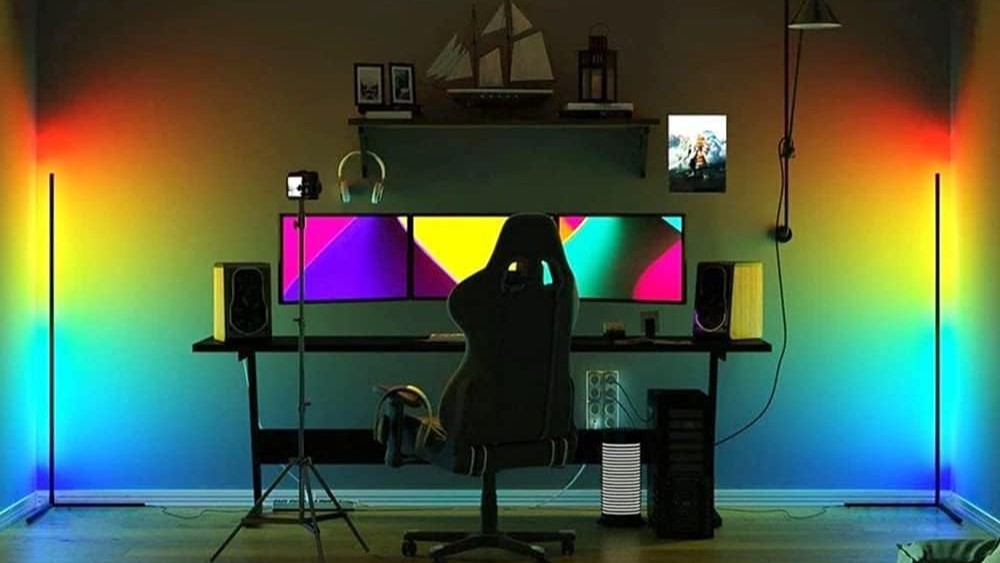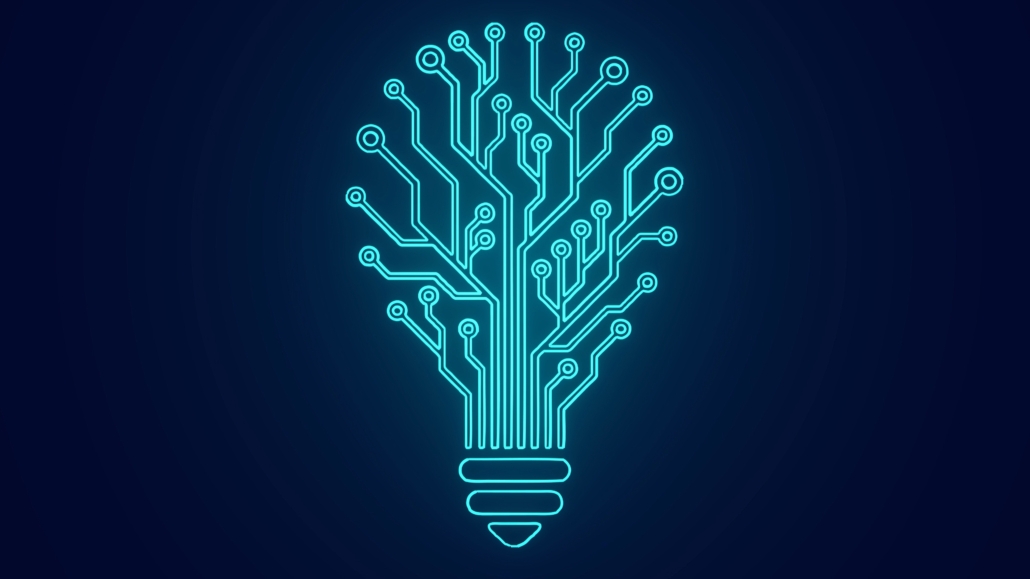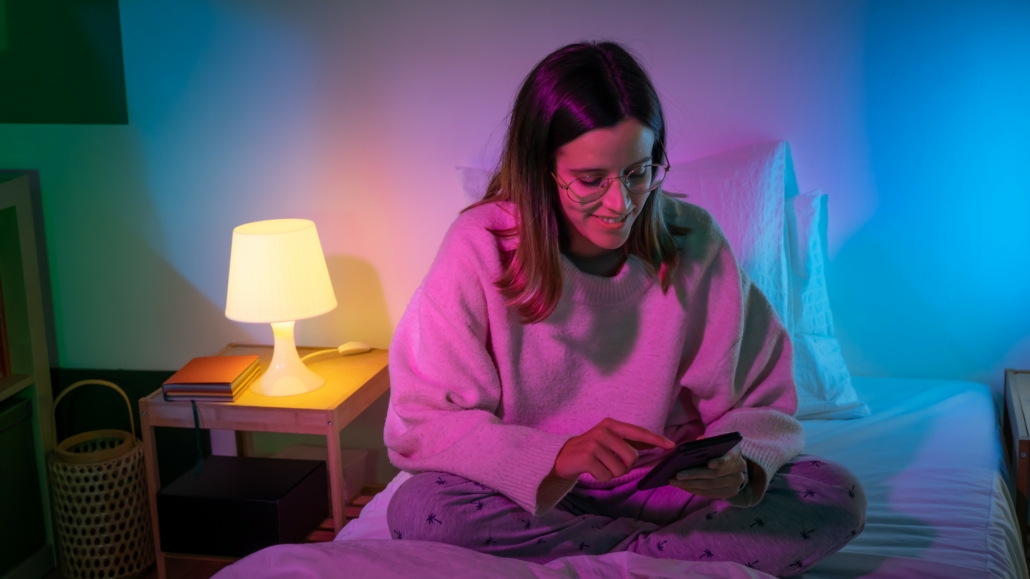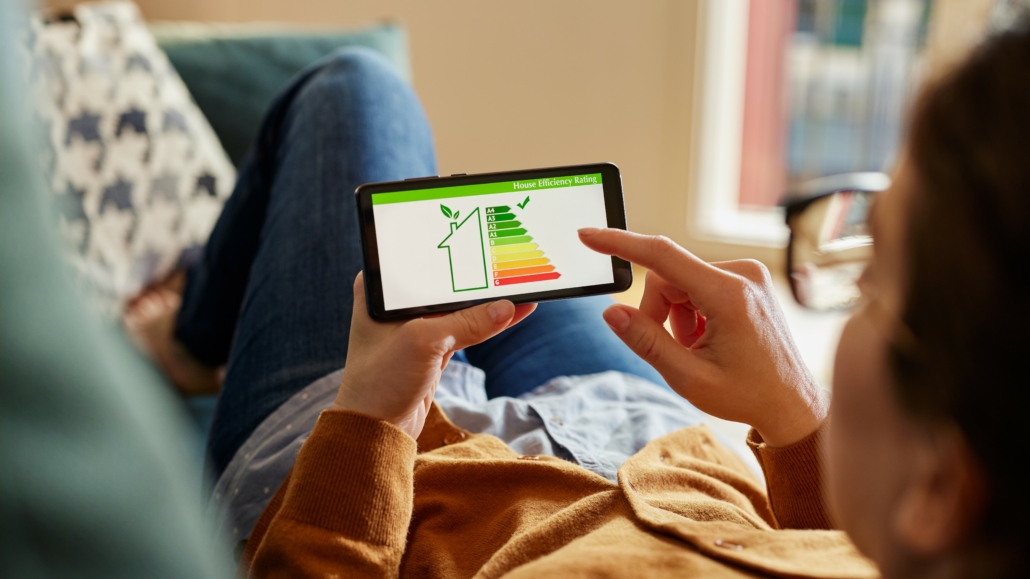
The Tuya Smart Digital Corner Lamp Set – All You Need To Know
All you need to know about the Tuya Smart Corner Light in a single, detailed guide. Key components, features, connectivity, remote, smart app and a lot more.

The advent of smart home technology has illuminated our living spaces in more ways than one. One of the standout stars in this bright new world is the smart light bulb — a compact powerhouse that not only illuminates your home but does so much more. For the tech-savvy homeowner or anyone looking to dip their toe into the ‘smart’ life, smart bulbs offer a gateway to a world where your lighting can be controlled with the tap of a smartphone or the sound of your voice.
In this detailed exploration, we’ll uncover the benefits, functionality, and key attributes of smart light bulbs, shedding light on why they are the next best thing in home lighting solutions. Whether you’re looking to create a cozy ambiance for a night in or optimize your lighting for energy efficiency and security, smart bulbs have you covered.
Before the days of smart technology, a bulb’s only function was to emit light. But a smart bulb goes beyond the basics. Equipped with Wi-Fi, and often features such as built-in microphones and speakers, these LED wonders can be controlled remotely, synchronized to music, change colors to fit your mood, and even pair with your smart security system to give the impression that someone’s home when you’re out.

Designed to be user-friendly and offer a range of customizable features, smart bulbs are at the heart of the burgeoning home automation movement. Imagine dimming your lights gradually as you wind down for the evening, setting them to flash when you receive a notification, or syncing them to your favorite tunes to throw an impromptu dance party. The possibilities are as varied as they are vibrant.
Transitioning to smart bulbs is a simple and straightforward process. In most cases, all you need to do is screw in the bulb, follow the app’s instructions, and you’re all set. Smart home beginners will appreciate the easy setup, and tech enthusiasts will relish the initial sync as the start of a deeper connection between their home and their gadgets.
Compatible with a wide range of fixtures, smart bulbs come in various sizes, with the standard E27 fitting being a popular choice due to its versatility. What may have once seemed a mundane task — changing a light bulb — now opens the door to a network of interconnected devices that can transform your daily routines.
The core allure of smart light bulbs is their sophisticated control mechanisms. Whether you prefer the simplicity of a smartphone app, the convenience of a voice assistant, or the automation provided by smart scenes, these lights put the power in your hands (or voice).
Dimming capabilities allow for atmospheric adjustments, while voice control through systems like Alexa and Google Assistant make the entire process hands-free. Smart scenes take the guesswork out of creating the perfect setting for any occasion, grouping lights together to achieve the desired effect with a single command or tap.
With robust apps like eWeLink, setting schedules for your lights is a breeze, ensuring that you never arrive home to a dark house or waste energy by leaving lights on when not needed. The ability to adjust the color temperature and brightness further personalizes the lighting experience to match your activities and time of day.
Perhaps one of the most entertaining features of smart bulbs is their ability to sync up with your music, bringing your favorite tunes to life in a kaleidoscope of color. Set the mood for a quiet evening with soft, warm lighting or host a lively gathering with a vibrant light show that complements the beat.
Music synchronization is not just about adding fun to the mix, it’s about creating a holistic sensory experience. With setting adjustments that range from mild to wild, you can tailor the intensity of light changes to cater to your style. Dance to the beat of your favorite tunes, or let the lights match the mood of a slow ballad – with music synchronization, anything is possible. But what exactly is music synchronization and how does it work?
In simple terms, music synchronization is the process of matching lighting effects to the rhythm and tempo of a song. This can be achieved through specialized software that analyzes an audio track and sends signals to control lights, or through manually adjusting settings on individual light fixtures.
The result is a dynamic display of lights that moves and changes in time with the music, creating a captivating visual experience. Whether you’re hosting a party at home or putting on a concert for thousands, music synchronization adds an extra layer of excitement and energy to any event.
First of all, what are RGB light bulbs exactly? To put is simply they are a type of LED light bulb that is capable of emitting red, green, and blue light. These three primary colors can be combined in various intensities to produce a wide range of colors. 16 million to be exact.

In addition to being able to change colors on demand, smart light bulbs also offer a variety of customizable options. Users can choose from preset color schemes or create their own personal lighting scenes. For example, you may want to set your lights to a calming blue for reading before bed or a bright pink for a party atmosphere.
Some smart light bulbs even have additional features such as color-changing effects and animations. These can include pulsing lights that sync with music or creating a flickering candlelight or fireplace effects for a cozy ambiance.
This feature isn’t just for show. It can also serve practical purposes. Warm hues can promote relaxation in the evening, cooler tones can increase alertness during the day, and a colored light that turns on to indicate the state of your smart home system adds a layer of intuitive communication.
Smart light bulbs aren’t just playthings — they also play an essential role in your home’s security. With the ability to control your lights from anywhere in the world, you can simulate occupancy, warding off potential intruders. The remote control feature also ensures that you arrive at a well-lit, welcoming home, even if you’re returning very late at night.
By integrating with your smart security system, smart bulbs work in tandem to keep your home safe. Motion-activated lights not only save energy but also act as a deterrent, catching unwanted attention and alerting you to any unusual activity.

Smart bulbs are not just smarter — they’re also kinder to the environment and to your wallet. LED technology is already renowned for its energy efficiency, and this translates to smart bulbs which consume less power than traditional incandescent bulbs, saving you on your electricity bill.
The longevity of LED bulbs means less frequent replacements, which is not only convenient but also means less waste. In the case of smart bulbs, the additional features like dimming and scheduling also contribute to their energy-saving prowess, ensuring that they are as sustainable as they are functional.
Smart light bulbs do not exist in isolation. They thrive when connected to a broader smart home ecosystem, where they interact with devices such as smart switches, thermostats, and even refrigerators. This interconnected network fosters a home environment that adapts to your preferences, habits, and needs without constant manual adjustment.
For the die-hard smart home enthusiast, this is the dream realized — a home that is not just smart but intuitively knows when to turn up the heat, when to power down for the night, and when to add that touch of class that only synchronized lighting can provide.
The entrance of voice assistants into the smart home arena has added a new dimension to the way we interact with our lighting. Conversations with our virtual helpers swiftly translate to tangible changes in our environment. Voice commands such as “turn the lights off,” “set the living room lights to movie mode,” or “dim the bedroom lights to 30%,” have become part of our everyday lexicon.
The integration of smart bulbs with voice assistants is seamless and empowers users to take charge of their lighting with the ultimate ease. It’s a literal voice-controlled symphony that makes interacting with your smart bulbs an intuitive and pleasurable experience.
While the benefits of smart bulbs are considerable, no technology is without its drawbacks. Some users may find the initial investment a barrier, as the cost of a single smart bulb can be higher than that of a traditional one. However, this cost is often justified by the bulb’s features, quality, and lifespan.
Another common concern is the reliance on technology. If your Wi-Fi goes out, so does your app control and any automatic scheduling you’ve set up. This is where smart home hubs can come in handy, acting as a centralized control unit that mitigates the effects of individual device failures.
As with all things tech, the world of smart bulbs is constantly evolving. New features are being added, and existing ones are being improved upon. The integration of artificial intelligence and machine learning is likely to create even more personalized and adaptive lighting options, further cementing the role of smart bulbs in our daily lives.
One can also anticipate advancements in energy harvesting, connectivity, and design that will make smart bulbs even more efficient, versatile, and aesthetically pleasing. Whether through enhancements to the bulbs themselves or to the ecosystem in which they operate, the future is undoubtedly bright for smart home lighting.
In conclusion, smart light bulbs are not just about turning on and off remotely — they represent a tangible shift in the way we think about and interact with our living spaces. They offer customization, convenience, and connection, all while contributing to a more efficient and secure home. For those looking to stay at the forefront of tech innovation or simply wanting to add a touch of magic to their home, smart bulbs are an illuminating choice.

All you need to know about the Tuya Smart Corner Light in a single, detailed guide. Key components, features, connectivity, remote, smart app and a lot more.

 On-Grid vs Off-Grid vs Hybrid Solar Power Systems: Which One Should You Cho...
On-Grid vs Off-Grid vs Hybrid Solar Power Systems: Which One Should You Cho... 